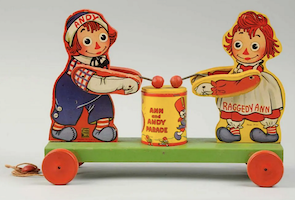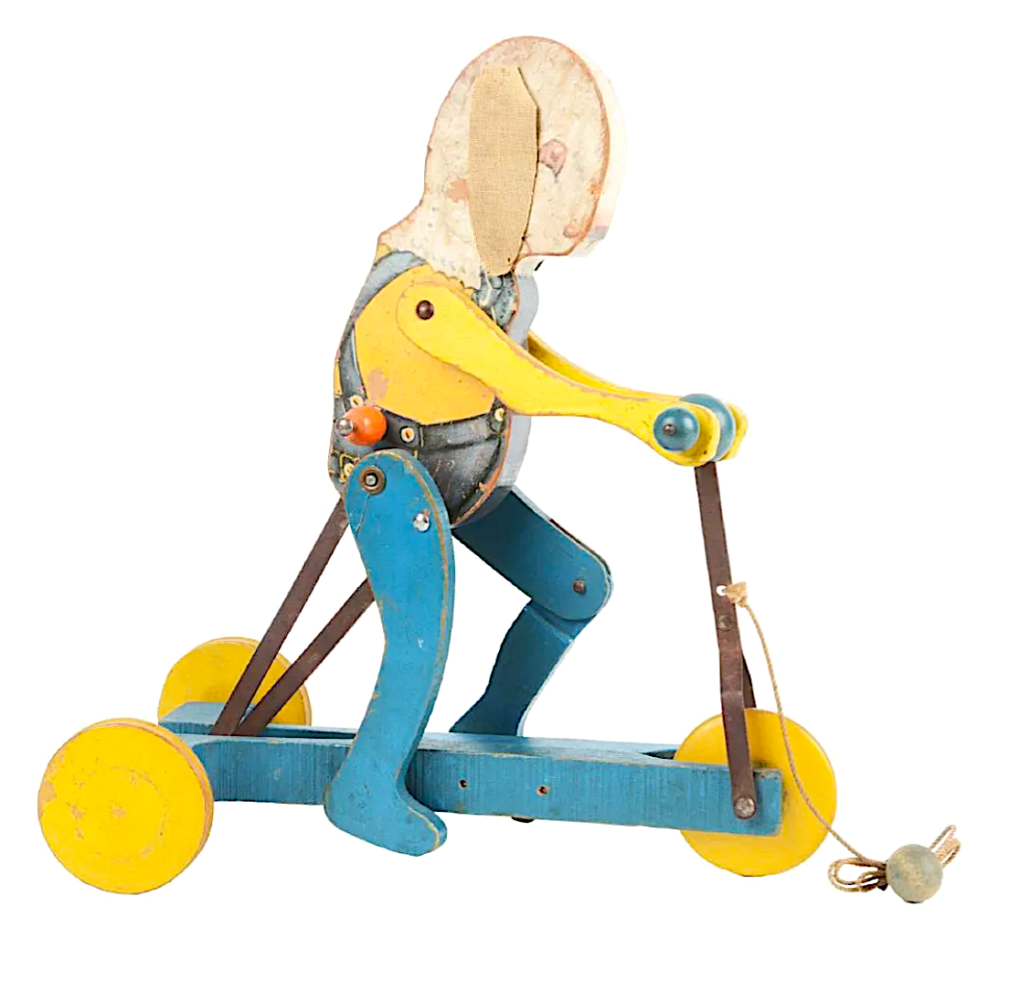
NEW YORK — Colorful and educational Fisher-Price toys have been a staple of childhood since 1930, when the toy company was founded. The Great Depression had started a few months earlier but Herman Fisher, Helen Schelle, Irving Evans, and his wife, Margaret Evans Price, believed that children still needed to be children and that play was an important part of a child’s education.
East Aurora, a small village in upstate New York, had a population of just under 5,000 people at the time. Among its residents were Evans, who was retired from Woolworth’s, and his wife, Evans Price, a well-known illustrator who would become Fisher-Price’s first art director. They joined forces with Schelle, who had operated a toy store in Binghamton, and Fisher, who went on to coin the term “preschool toys,” with the goal of creating well-made toys that offered good value and hours of fun. Boosted by the East Aurora mayor’s capital fundraising that netted them $100,000 in start-up cash, Fisher-Price was born, and the company introduced a line of 16 toys, dubbed the 16 Hopefuls, at the 1930 International Toy Fair in New York City.

Most Boomers and Gen-Xers had at least one Fisher-Price product when they were small — toys such as the Bubble Mower, the Corn Popper, or the endearing Chatter telephone with eyes that moved back and forth as a child pulled it along on a string. Introduced in 1963, Chatter is one of the company’s most popular toys, still being manufactured and made iconic thanks to its appearance in the Toy Story movie franchise.
Children love few things better than taking their favorite toy for a walk; arguably, the best of Fisher-Price’s offerings were its push toys (which are also called “pushies”) and pull-alongs. Among the company’s earliest toys, they were constructed from pine and steel parts that could take whatever wear and tear toddlers could inflict. Evans-Price’s background in art enabled her to design toys with charming lithographed decorations and labels. Many were based on characters from children’s books.
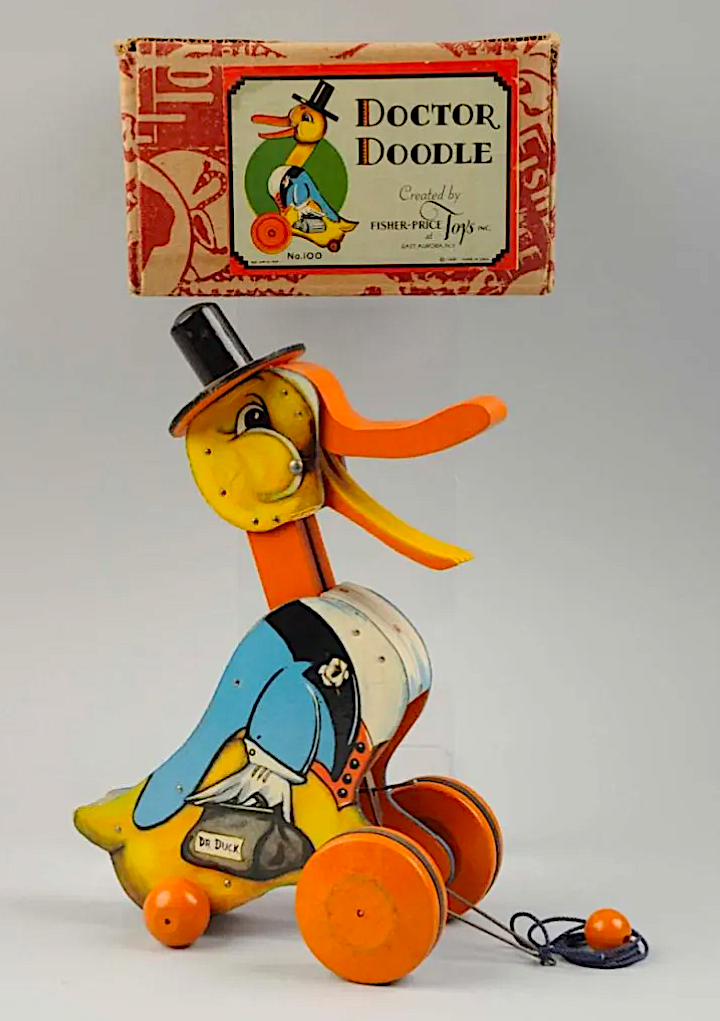
The first toy Fisher-Price produced in 1931 was the pull-along Doctor Doodle, which took the form of a duck wearing a black hat and toting a doctor’s bag. He flapped his wings and quacked as he was pulled on his string. The toy cost $3 when originally sold and today is valuable in mint condition. A seemingly never-played-with example sold in December 2015 at Dan Morphy Auctions for $1,400 plus the buyer’s premium. Doctor Doodle is one of a few of the 16 Hopefuls that wore a hat: Granny Doodle had one, and Drummer Bear wore a drum major-appropriate hat.
Another one of the 16 Hopefuls was the Bunny Scoot #105, which children could “walk” by pulling on its string to make the bunny pump its legs on its scooter. An example in great condition, retaining its original oilcloth, pull string and ball, sold for $4,000 plus the buyer’s premium in December 2017 at Dan Morphy Auctions.
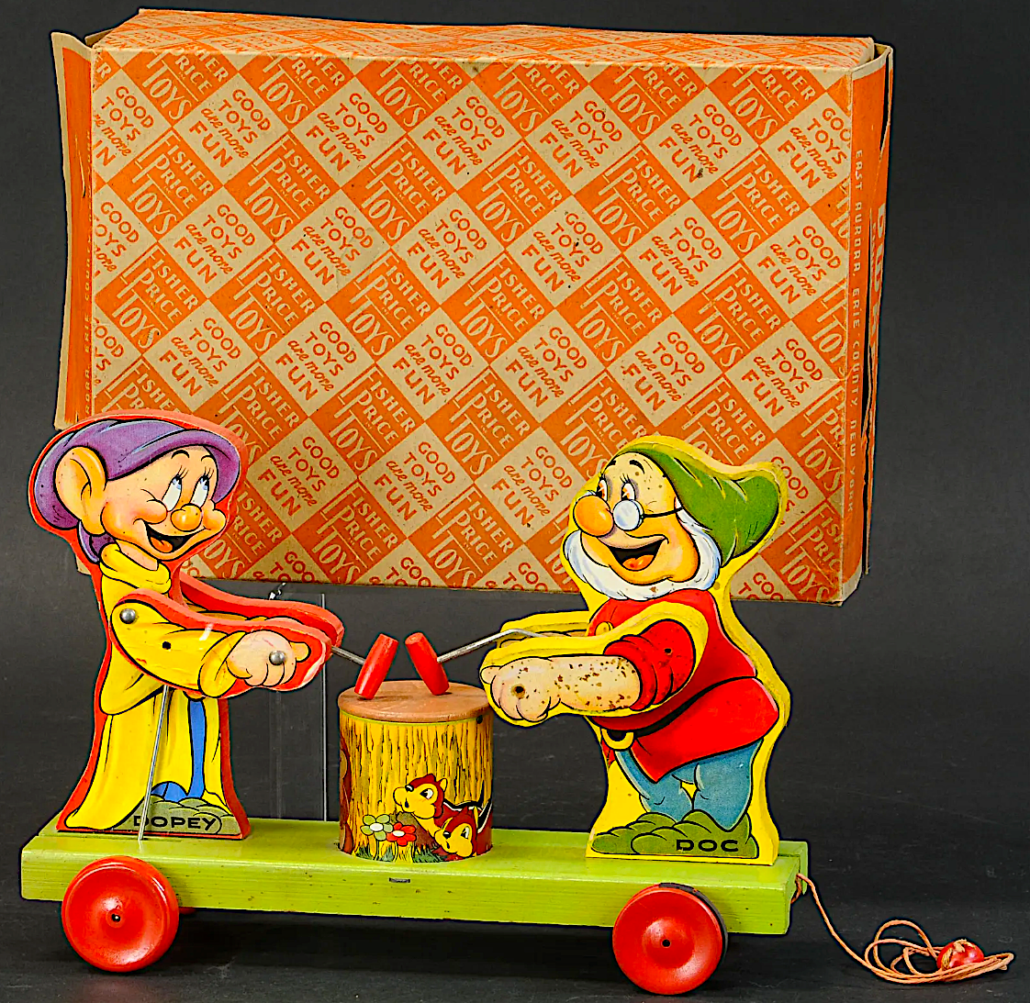
Within five years of its founding, Fisher-Price was the first American toy company licensed to create Disney toys. In 1939, it introduced the Doc & Dopey Dwarfs set #770, featuring two dwarfs from the 1937 animated film Snow White and The Seven Dwarfs. A boxed set, printed with the company’s motto “Good toys are more fun,” realized $1,000 plus the buyer’s premium in March 2022 at Bertoia Auctions.
Another coveted Disney Fisher-Price toy is a wind-up Donald Duck Bak-up, featuring an agitated Donald pulling a happier Mickey and Minnie Mouse in a cart. One such toy in original condition realized $1,400 plus the buyer’s premium in June 2021 at Bertoia Auctions. According to This Old Toy’s website, the wind-up mechanism allowed Donald to “walk” up to 30 feet, flapping his arms all the way.
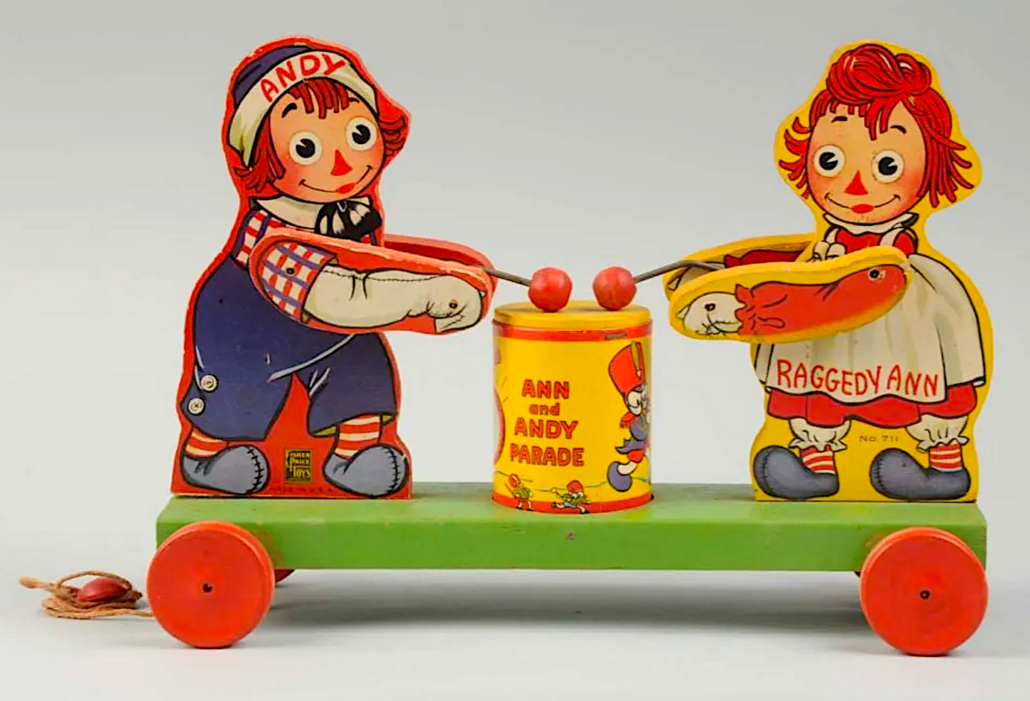
Very similar in appearance to the Doc & Dopey toy was its Raggedy Ann & Andy pull-along. While dolls of the patchwork pair were common, toys were not until 1941, when Fisher Price made a paper-on-wood toy featuring the two banging on a drum. To save costs, the company likely used the same base as it did for its Snow White-themed Disney toy. An original example of the Raggedy Ann & Andy earned $5,000 plus the buyer’s premium in December 2015 at Dan Morphy Auctions. It is reportedly the only licensed Raggedy Ann & Andy toy made by Fisher-Price, and was a special toy exclusively available in that year.
Push toys were just as popular as pull-alongs; Fisher Price made both until the 1970s, when plastic dethroned wood as the standard toy material. The above-mentioned Corn Popper push toy debuted in 1957 and is the longest-running production toy in Mattel’s portfolio (Mattel acquired Fisher-Price in 1993). Early pushies from the 1930s are desirable and include several animal variations, such as Pushy Pig, one of which sold in a lot of three early toys for $850 plus the buyer’s premium in June 2021 at American Antique Auctions.
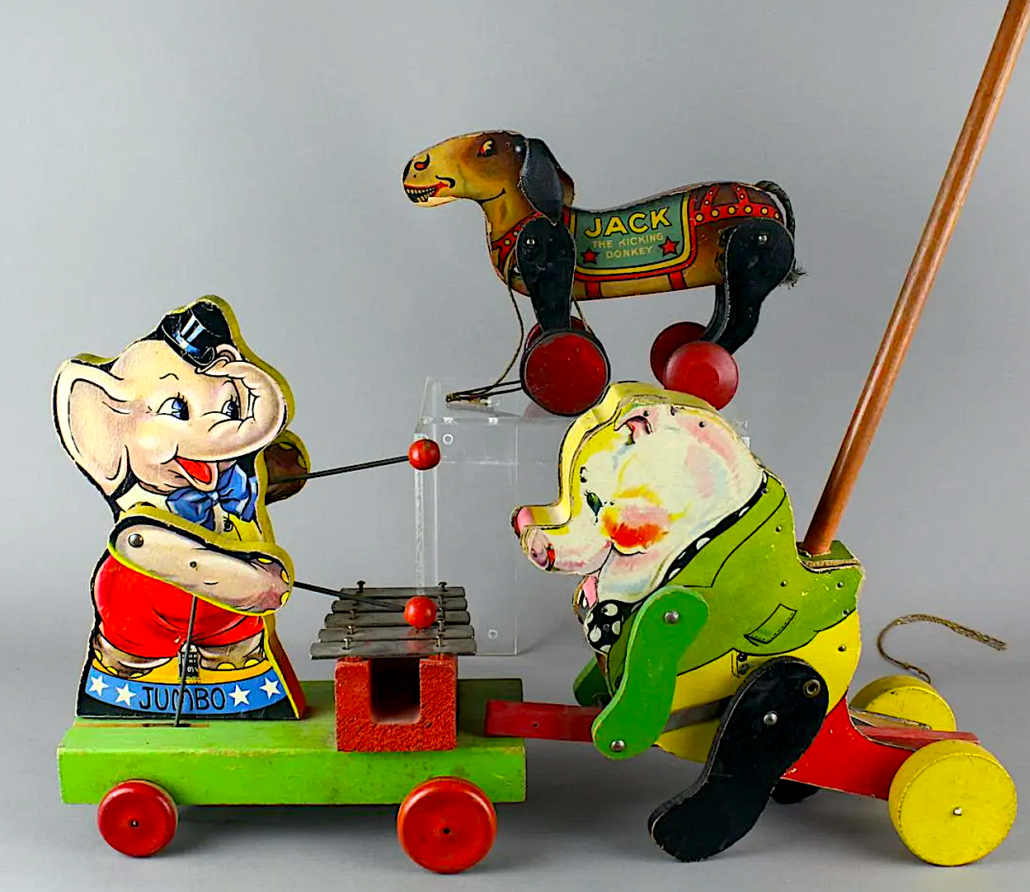
Fisher-Price toys have enchanted multiple generations. More than a few obsolete children have presented their preschoolers with the same toy they once played with, or a newer version of it, beaming as they watch the little ones having fun, developing their fine-motor skills and engaging their imaginations through play — the best teacher of all.


